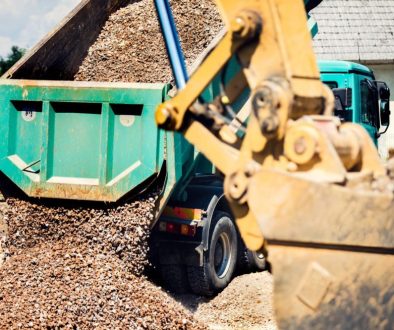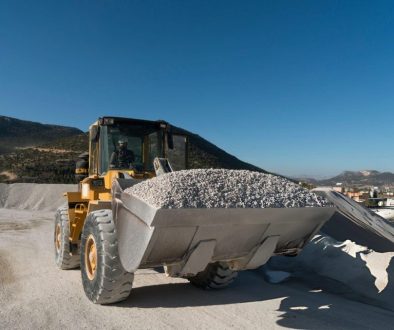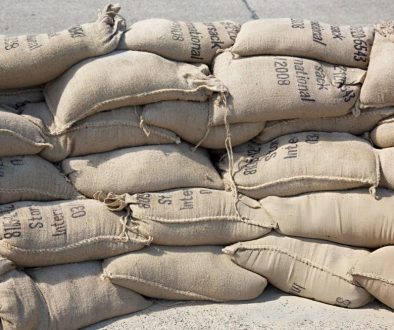Aggregates play an important role in many home improvement projects. Whether you’re enhancing your garden or starting a small construction task, using aggregates can significantly impact the outcome. From adding stability to roads and walkways to providing crucial drainage solutions for gardens, aggregates are an unsung hero in home projects. Managing them efficiently ensures your project runs smoothly and gets the best possible results.
Having a plan for managing aggregates involves more than just ordering a pile of materials and hoping for the best. Proper management helps make sure you have the right materials, in the right amount, at the right time. It also involves organising and disposing of any surplus effectively. Let’s look at how you can handle aggregates in a more structured manner to ease the load on your projects.
Understanding Aggregates
When we talk about aggregates, we refer to a variety of materials like gravel, sand, and crushed concrete. Each type of aggregate serves a specific purpose, making it crucial to understand their uses. For example, gravel is excellent for creating strong bases for driveways and garden paths. Meanwhile, sand works wonderfully for filling gaps or providing a soft layer under pavers. Recycled concrete takes sustainability up a notch by allowing old materials to find a new purpose in your project.
Knowing the unique characteristics of each aggregate type can help in making informed decisions about your home projects. Aggregates wear many hats; they can serve as decorative features in a garden, improve drainage, or even act as a fill for construction. Proper use of aggregates often determines the durability and effectiveness of the entire project. Think about the long-term benefits: a stable driveway that withstands the test of time or a garden that absorbs rainwater efficiently.
Understanding these materials can feel a bit like learning a new language, but doing so will pay off when you can’t tell where efficiency ends and beauty begins. By familiarising yourself with the main types and their applications, you position yourself to manage them better and see more success in your home improvements.
Choosing the Right Aggregates
Selecting the perfect aggregates for a project isn’t always straightforward. The process is much like picking the right spices for a recipe; too little or the wrong kind can drastically alter the outcome. Start by identifying the project’s specific needs. Are you building a patio? Maybe you need aggregates for a rainwater management system. Each project has unique requirements that influence the choice of aggregates.
Consider the following to make an informed choice:
1. Project Type: Determine if the primary need is structural support, drainage, or decorative finish. Each purpose necessitates a different aggregate type.
2. Size and Texture: Larger aggregates provide stronger foundations, while finer aggregates ensure smooth finishes. The texture can also affect the aesthetic appeal of garden features.
3. Quantity: Estimate the volume required accurately to avoid under-ordering or wastage. Calculate the area and desired depth to determine the quantity needed.
By tailoring your choice of aggregates to your project’s needs, you not only enhance the effectiveness but also maximise its aesthetic value. Whether jazzing up a garden path with colourful pebbles or solidifying a driveway with sturdy gravel, your choice of aggregates is key to success.
Using skips can help with the seamless delivery and removal of aggregates, reducing hassle and ensuring your site remains clutter-free. They offer a simple solution for any excess materials or waste, preventing it from becoming a lingering afterthought in your project.
Efficient Management and Disposal
Once you’ve chosen the right aggregates, the next step is managing them effectively on-site. Proper storage and organisation are key to maintaining a tidy workspace and preventing cross-contamination of materials. Store different types of aggregates separately in designated areas to keep things orderly. Use clearly labelled containers or sections so you can quickly identify and access the materials you need without any mix-ups.
Organisation doesn’t end there; it includes planning for excess materials too. Any leftover aggregates might seem like extra baggage but can be handled with ease. This is where skips prove incredibly helpful. By regularly disposing of surplus materials, you maintain a clean and efficient work environment, which can enhance productivity. Hiring skips allows for the easy collection of waste and redundant materials, all while being environmentally thoughtful by recycling where possible.
Using skip hire services, especially in areas like Knutsford, offers a streamlined solution. Skips help in consolidating and disposing of waste and excess materials in a responsible manner. They come in various sizes to suit the scale of your project, ensuring that all project waste is managed efficiently without frequent runs to disposal sites. This service not only saves time but also reduces the logistical headaches involved in the removal of hefty waste materials.
Benefits of Using Skip Hire Services
Considering the advantages, employing skip hire services for managing aggregates stands out as a smart decision. Firstly, skips bring convenience, enabling you to focus on your project instead of getting bogged down with sorting and disposing of materials. They can accommodate all types of waste, from excess aggregates to general rubbish, minimising the number of rubbish piles accumulating on your worksite.
Another perk of utilising skips is the cost-effectiveness they offer. By renting a skip, you avoid the costs associated with multiple transports to waste sites, which can add up over time. Furthermore, these services are designed to adhere to environmental regulations, ensuring that any recyclable materials are handled appropriately, thus contributing to sustainable project practices.
Additionally, skips can be an indispensable tool in simplifying project management. Their ability to manage large volumes of waste means you can maintain a high standard of cleanliness and safety on-site. This organised approach not only makes the workspace more efficient but also reduces the likelihood of accidents or mishaps related to clutter.
Wrap-Up of Aggregate Management Tips
Bringing any home project to life demands thoughtful planning and efficient management of resources. Aggregates are versatile materials that provide strength, stability, and beautiful finishes to many projects, whether it’s a garden path or reliable driveway. By understanding the different types of aggregates and their specific applications, you’ll be partway to project success.
Selecting the right kind of aggregates and accurately estimating quantities can greatly impact cost-efficiency and outcome. Skips stand out as invaluable partners in streamlining aggregate management, offering practicality, cost savings, and an environmentally friendly option for waste disposal. With little effort, this holistic approach to managing aggregates can ensure that your project unfolds smoothly and successfully, achieving long-term satisfaction.
Should you choose to hire skips in Knutsford, you’ll find it’s more than just a practical choice—it’s an investment in the quality and sustainability of your project.
Considering all the benefits that come with managing household projects, choosing the right support can make a difference. If you’re working on a home improvement project and looking for an efficient way to manage aggregates, consider skip hire in Knutsford. Enviro Skip Hire can provide the support and materials needed to keep your project clean, affordable, and eco-friendly.




